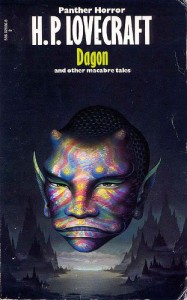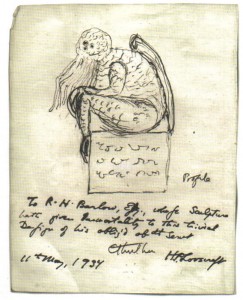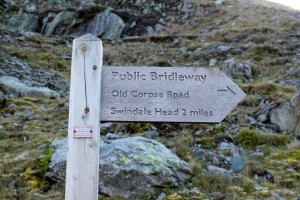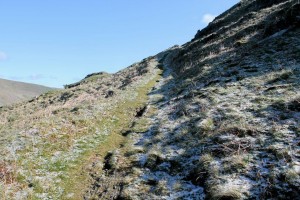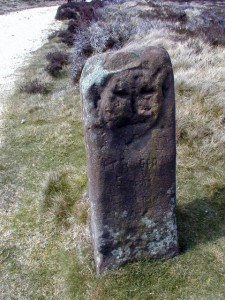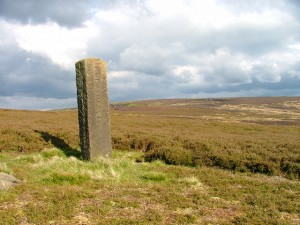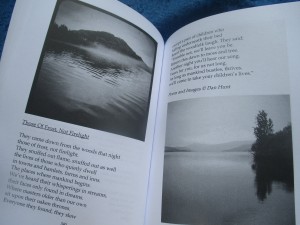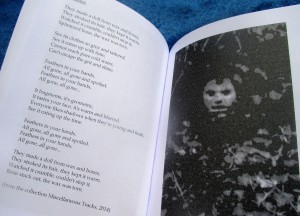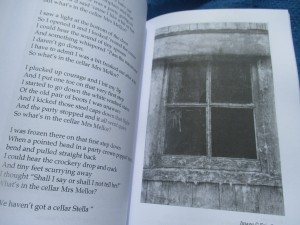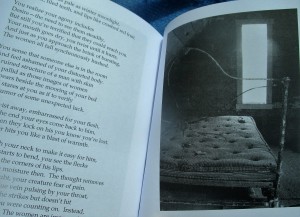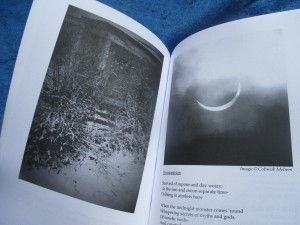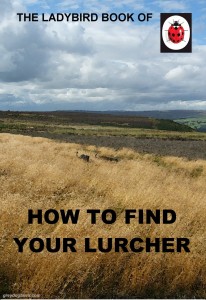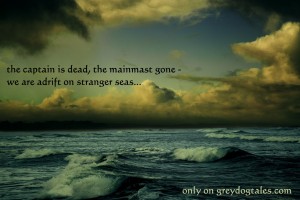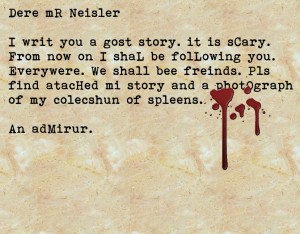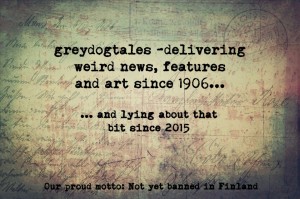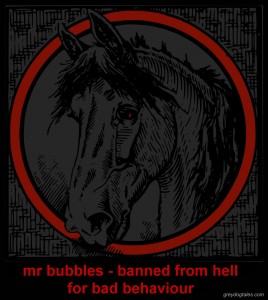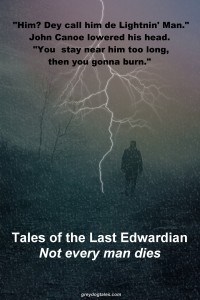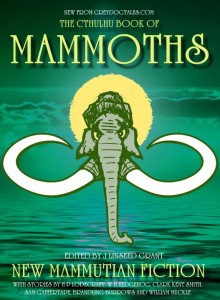In which we poke brutally at some common weird fancies, argue and then give up because it’s easier. And we cross-question the spirits of H P Lovecraft and Alfred Lord Tennyson. Join us now for an exhaustive (brief) and in-depth (glancing) study of the Kraken and mighty Cthulhu. We might have written more, dear listener, but we know that you have washing-up to do.

Today’s article is not about giant squids. Right? Everybody’s obsessed with giant squids and enormous octopuses. Maybe because they have the most astonishing eyes. Maybe because they are rubbery and thrash their tentacles, a habit not often seen in household pets or other commonly encountered creatures. Add to that the fact that there might always be an even bigger one just a little deeper… well, they had to find their way into myths and horror stories. It was inevitable.
So when many people think of either the Kraken or of H P Lovecraft’s Cthulhu, they shoot straight into octopus or squid mentality. We lump these two mythological beings together today because of Tennyson, the Victorian Poet Laureate – and because neither are quite as squid-y as you might think. Stick with us. We’re following in the footsteps of our ‘deconstruction of ghouls’ series (see ghoul versus ghul).
Cthulhu
It’s generally thought that H P Lovecraft’s early story Dagon (1917) provided the building blocks for his later Call of Cthulhu (1926). These two stories have in common the tales of suffering sailors, oceanic monstrosities, carved stones from the deep and a sense of almost indescribable horror.
(We’ll leave aside any connections with the Philistine or Phoenician fish-god, especially as theological Dagon is a confused concept and may refer to an earlier god of vegetation and grain-supply as well.)
The key monstrosity seen in Dagon, which is not specifically named as a god itself, is described thus:
“…the thing slid into view above the dark waters. Vast, Polyphemus-like, and loathsome, it darted like a stupendous monster of nightmares to the monolith, about which it flung its gigantic scaly arms, the while it bowed its hideous head and gave vent to certain measured sounds.”
The classic cyclops Polyphemus was the one-eyed son of the god Poseidon and Thoosa a sea-nymph, from Greek mythology (Poseidon in turn was the son of the Titan Cronus). His first recorded mention is in Homer’s Odyssey, and despite his aquatic parentage, he was a land-based, man-eating giant.
 Nine years later in CoC, H. P. Lovecraft described a statue of Cthulhu as “A monster of vaguely anthropoid outline, but with an octopus-like head whose face was a mass of feelers, a scaly, rubbery-looking body, prodigious claws on hind and fore feet, and long, narrow wings behind.”
Nine years later in CoC, H. P. Lovecraft described a statue of Cthulhu as “A monster of vaguely anthropoid outline, but with an octopus-like head whose face was a mass of feelers, a scaly, rubbery-looking body, prodigious claws on hind and fore feet, and long, narrow wings behind.”
When the god-like being is encountered directly, it ‘lumbers’ and strikes out with those claws. Call of Cthulhu again:
“…on the masonry of that charnel shore that was not of earth the Titan thing from the stars slavered and gibbered like Polypheme cursing the fleeing ship of Odysseus.”
Eventually it takes great strokes through the ocean waters, much like any swimmer, in pursuit of the ship. In both stories the most pertinent feature is the gigantic, anthropoid nature rather than the cephalopod qualities – the realm of the Greek cyclopes and Titans.
Note also the repeated use of the term Cyclopean in such weird fiction when referring to masonry, for the cyclopes were associated with the building of massive stone works, as well as smith-craft.
By the time HPL had conceived of Cthulhu, he was clearly drifting into his own mythic world, but if we did want to go seriously Greek, then we could add in the early sea god Proteus. Another son of Poseidon, Proteus could assume any form and his flesh could be as changeable as water – observe the plasticity demonstrated by Cthulhu’s recombination after being struck by the ship in CoC.
Apart from brick-laying and gigantism, the defining characteristic that placed the cyclopes apart from others was their possession of only one eye each. To mess with our heads, Lovecraft’s own 1937 sketch of Cthulhu is a side view, and appears to show one dominant and two subordinate eyes, at least on the left side of his head. There is no obvious sign of the suction cups which might make the feelers true tentacles. The mouth-parts of squid and octopus form a distinct horny beak, but there is no indication of this in the texts for Cthulhu.
(Given that this is Lovecraft, it’s also quite possible that Cthulhu’s eyes are ambulatory, toddling around all over his head, and variable in number. We’re not going to take all this too seriously.)
What you do have is an utterly enormous man-shaped being with a questionable number of eyes and a wibbly chin whose origins may be more related to the line of the Greek Titans than to Olly the Octopus. We accept that Cthulhu will remain forever welded to squidity more than to polyphemity, because that head is a great image. When drawn by slightly better artists than the old gent…
Note: If you like delving into the origins and natural history of HPL’s beings, you might also enjoy Fred Lubnow’s great Lovecraftian Science site: lovecraftian science
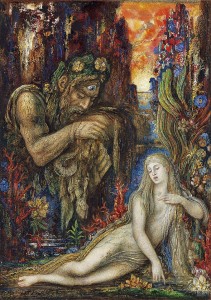
And so to our connection between these two horrors. It’s tempting to think that H P Lovecraft had poet Alfred Tennyson’s work in mind when he fleshed out his concept of Cthulhu. Tennyson (1809 – 1892) was an odd fellow. Robert Browning complained that the poet edited and revised his poems to the point of insanity, and W H Auden famously said:
“There was little about melancholia he didn’t know; there was little else that he did.”
But we like some of his verse, and this poem of his seems too relevant for HPL to have missed:
The Kraken
Below the thunders of the upper deep;
Far, far beneath in the abysmal sea,
His ancient, dreamless, uninvaded sleep
The Kraken sleepeth: faintest sunlights flee
About his shadowy sides: above him swell
Huge sponges of millennial growth and height;
And far away into the sickly light,
From many a wondrous grot and secret cell
Unnumbered and enormous polypi
Winnow with giant arms the slumbering green.
There hath he lain for ages and will lie
Battening upon huge sea-worms in his sleep,
Until the latter fire shall heat the deep;
Then once by man and angels to be seen,
In roaring he shall rise and on the surface die.
Alfred Lord Tennyson 1830
Unbeknownst to many, the original Kraken was devoid of cephalopod qualities. Tennyson had merely built on a growing mythology of giant squid and general fantasies of ships being pulled down into the depths by flailing tentacles. His poem is based on the 17th and 18th century manipulations of much earlier Norse legends, concerning a gigantic creature that supposedly preyed upon shipping in the sea off Northern Europe.
The squid version was first fully described by Bishop Pontoppidan in A Natural History of Norway (1752). Pontoppidan described the destructive potential of the giant beast: “…it is said that if [the creature’s arms] were to lay hold of the largest man-of-war, they would pull it down to the bottom”. The Bish also alludes to reports of a large cephalopod washed up on Norwegian shores, assuming this to be a junior Kraken of some form.
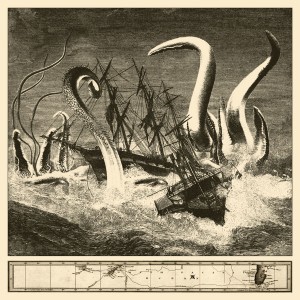
Unfortunately, the earliest legends of the Kraken off Norway and Greenland do not seem to have referred to squid. The word kraken essentially mean ‘crooked’ or ‘unnatural’.
There was certainly talk of a monster, but it was variously whale-like, or some form of giant crab-fish mutation, if it was described clearly at all. It was huge, and could be mistaken for an island. It had an enormous mouth, and was said to drag ships down not with the use of tentacles but via the wash or whirlpool formed when it submerged again.
It’s interesting to look at what else could have originated the myth of the Kraken in its original state. The early mixing of kraken and the word hafgufa in stories is curious – hafgufa means sea-steam or sea-mist. One of the characteristics of the waters around Iceland is the degree of volcanic activity. This results in land masses which rise seemingly from nowhere, areas which disappear under the sea and highly dangerous currents around active areas. The sea bubbles and steams, as if something huge lies below.
The mythology of vanishing islands is a subject in itself, and other accounts of sea-monsters which appeared to be islands are common, from Nordic to Arabian tales. See for example the tenth/eleventh century Old English poem, The Whale:
“…a kind of fish, the great sea-monster which is often unwillingly met, terrible and cruel-hearted to seafarers, yea, to every man; this swimmer of the ocean-streams is known as the asp-turtle.
His appearance is like that of a rough boulder, as if there were tossing by the shore a great ocean-reedbank begirt with sand-dunes, so that seamen imagine they are gazing upon an island, and moor their high-prowed ships with cables to that false land, make fast the ocean-coursers at the sea’s end, and, bold of heart, climb up.”
Other suggestions are of course whales themselves, moving under or just on the surface and not fully visible, and the nature of tidal islands and sandbanks.
So the Kraken as a multi-tentacled monster or gigantic squid is basically a crooked version in itself, confabulated by naturalists and fantasists until it became the thing it is today. Not squid-y at all.
We should have stopped there, but it seemed mean not to mention a few of the Kraken appearances in media while we have it with us. So you can indulge yourself with films such as these:
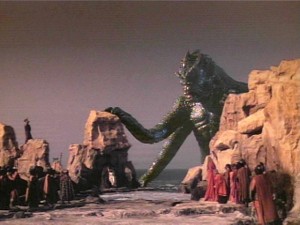
a) Clash of Titans, both the 1981 and 2010 versions. Their Kraken is a mixture of giant fish-man and octopoidal thing. The earlier one is most humanoid; the later one is more bestial and incorporates crab-like features as well. How these monsters of the Northern ice-seas ended up in the Mediterranean is a mystery we cannot fathom.
b) Kraken (2006), with the lovely Victoria Pratt. Not a terribly lovely film, though. Not enough Kraken, and this time it really is just a boring old giant squid.
c) Pirates of the Caribbean: Dead Man’s Chest. A proper full-blown squid Kraken, but with the mouth and teeth of a sand-worm from Dune. Shai Hulud!
In books, China Miéville’s novel Kraken (2010) features a cult devoted to the worship of the creature, whilst John Wyndham’s The Kraken Wakes (1953) rather disappointingly has no Kraken in it at all, but underwater aliens instead. Shame.

As for comics, Marvel’s Commander Kraken was a self-styled modern-day pirate who first encountered and fought Namor the Sub-Mariner. Namor used the Kraken, a gigantic octopus, to defeat his foe.

Far darker and more interesting, but typically not in English, is the Spanish Kraken comic (1983-1984?). Here, the Kraken is a mythical monster haunting the darkness, evil incarnate according to some, and the most dangerous creature of the sewers and underworld. But we haven’t got a copy, so we can’t tell you any more.
We are over-oceaned and must stop. What was I supposed to say? Oh yes, buy my books, sign up to greydogtales immediately and be kind to your lurchers. That covers most things…
